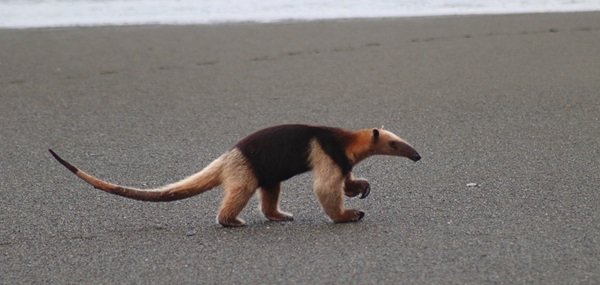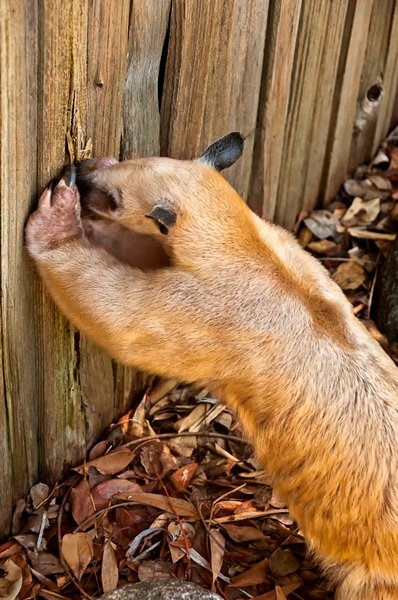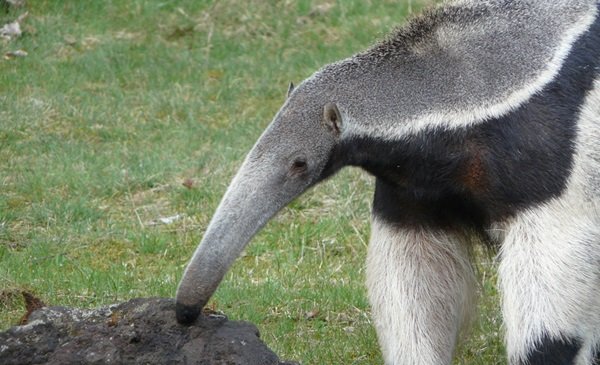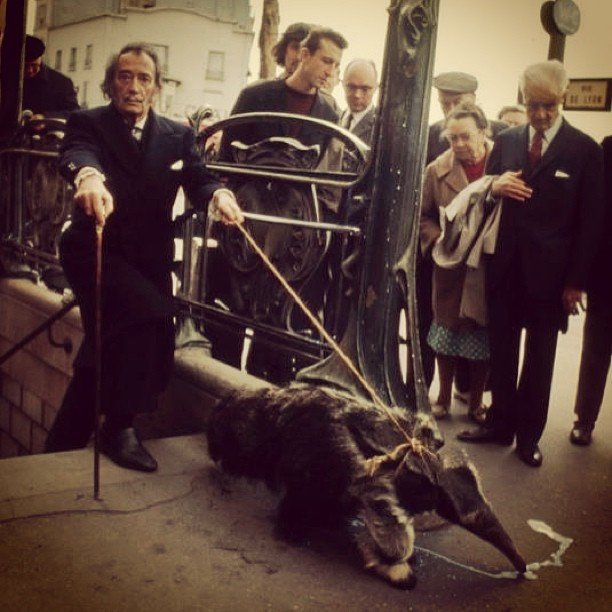Have you ever considered the possibility of owning an anteater as a pet and wondered, “can you have a pet anteater?” While it may not be the first animal that comes to mind, these unique creatures can be a fascinating addition to your home. However, it’s essential to understand the challenges and rewards associated with caring for such an exotic pet before deciding to bring one into your life.
In this comprehensive guide, we’ll explore the legality and regulations of pet anteaters, the different types available, their specific needs, the challenges of owning an exotic pet, and much more. We’ll also discuss ethical considerations and alternatives, as well as provide valuable tips for prospective anteater owners.
Anteaters in Popular Culture
Anteaters first came into the broad American consciousness in a rather peculiar way. In 1969, the eccentric artist Salvador Dalí was photographed walking his pet anteater on the streets of Paris. This unusual sight caught the attention of the public and sparked a fascination with these exotic creatures. Dalí’s affinity for the anteater added a layer of intrigue and appeal to these unique animals piquing the interest of potential exotic pet owners. Read more about it here.
Essential Highlights
Owning an anteater requires a permit or licence in some jurisdictions and understanding the differences between the three types of pet anteaters.
Providing proper diet, environment, exercise, care and attention is essential for their health. Owning one presents unique difficulties such as finding specialist vet care.
Consider ethical implications before deciding to own an anteater – alternatives include adoption or supporting conservation efforts & other exotic pets like sugar gliders/hedgehogs/chinchillas.
Anteater Legality and Regulations

When it comes to exotic animals like anteaters, legality and regulations can vary significantly depending on your location. In some jurisdictions, permits or licenses may be required to own a pet anteater, while taking the endangered giant anteater from the wild is illegal. Before deciding to adopt this unique companion, familiarize yourself with and follow the local laws and regulations.
Note that UK residents would need a Dangerous Wild Animals Licence (DWAL) to own a pet anteater, a step not recommended for most individuals. Being aware of the legal requirements and potential restrictions will help ensure you make an informed decision about whether an anteater is the right pet for you. For those determined souls, with enough effort and money you can likely acquire a pet anteater. But, before you spend the time, effort and money you might want to read our article about whether anteaters make good pets.
Types of Pet Anteaters

There are three main types of pet anteaters available: the silky or pygmy anteater, the northern tamandua, and the southern tamandua. Each species has its own unique characteristics and care requirements, therefore, comprehending these differences is vital before choosing the one that best fits your home and lifestyle.
When considering which type of anteater to bring into your home, it’s important
Southern Tamandua
Southern tamanduas are medium-sized anteaters characterized by their prehensile tails and distinct markings. These remarkable creatures are native to South America and adapted to life in the trees, which means they require climbing opportunities in their living environment.
To ensure their well-being, accommodate your southern tamandua with plenty of climbing opportunities, like a natural tree. Ensuring their enclosure replicates their natural habitat as closely as possible will make them feel comfortable and secure.
Northern Tamandua
Northern tamanduas, found in Central and South America, are similar to their southern counterparts but have a more limited range and slightly different appearance. They are also medium-sized anteaters, with a long snout perfect for reaching insects in their natural habitat.
Northern tamanduas, akin to their southern counterparts, thrive in an environment that resembles their natural habitat, replete with opportunities to climb. Proper care and attention to their specific needs are essential for their health and happiness.
Silky Anteater
The silky anteater is the smallest extant species of anteater, with a soft, silky coat and large, expressive eyes. They are native to Central and South America, where they share their habitat with other species such as giant anteaters, and have a strictly insectivorous diet, consuming arboreal ants and termites.
Silky anteaters are solitary animals, typically spending their time in the trees and being active during the night in search of food. Providing a suitable environment for them, with plenty of climbing opportunities and a diet that meets their nutritional needs is crucial.
Anteater Needs: Diet, Environment, and Exercise

Caring for an anteater as a pet requires a deep understanding of their specific needs, including their diet, environment, and exercise. Here are some key considerations:
Anteaters need a specialized diet consisting of insects, supplemented with soft fruits, vegetables, and commercial feeds.
Providing a habitat that closely replicates their natural environment is also essential.
Ensuring they have ample exercise opportunities.
Walking your pet anteater daily is necessary for maintaining their health and well-being, as they are highly active creatures by nature. Meeting these needs is crucial for the happiness and longevity of your exotic pet. It’s essential to be prepared to invest the time and resources necessary to provide the best possible care.
Challenges of Owning an Exotic Pet

Owning an exotic pet like an anteater comes with its own set of challenges. One of the main difficulties is finding a knowledgeable veterinarian who can provide appropriate care for your unique pet. Standard treatments for traditional pets like cats and dogs may not be suitable for anteaters, making it crucial to find a specialist who understands their specific needs.
Another challenge of owning an anteater is managing their strong odor, which can be more potent than that of a skunk’s spray. Their scent glands are more powerful than those of a skunk, honey badger, or weasel, and they may urinate to mark their territory until they become accustomed to their new habitat.
Being prepared to deal with these challenges is essential for anyone considering an endangered species, such as an anteater, as a pet.
Anteater Behavior and Socialization

Anteaters are solitary creatures, and while they can be friendly with proper socialization, they may not be suitable for households with young children or other pets. They generally prefer to reside alone and do not usually appreciate excessive social interaction with their own species or other pets.
Although typically friendly and enjoying human company, understanding and respecting the solitary nature of anteaters is crucial. Prospective anteater owners should be prepared to commit at least one hour of daily care and attention to their pet, ensuring they receive the proper socialization needed for a happy, well-adjusted companion.
Housing Your Anteater
For their well-being, it is vital to provide a suitable home for your pet anteater. They require ample space, with climbing opportunities to mimic their natural environment. A temperature-controlled habitat, maintained between 65 to 85 degrees Fahrenheit (18 to 29 degrees Celsius), is essential for their comfort and health.
In addition to providing a spacious and temperature-controlled environment, it’s important to manage the excrement and urine produced by your anteater. Utilizing pee pads in their living quarters and beneath branches can help contain the waste and maintain a clean, hygienic environment for your exotic pet.
What to Feed a Pet Anteater

Feeding your pet anteater involves providing a diet of insects, supplemented with soft fruits, vegetables, and commercial feeds. Anteaters require a specialized diet, primarily consisting of insects such as ants, termites, and other critters that live in the dirt.
In addition to insects, many pet anteaters enjoy:
Soft fruits
Vegetables To ensure a balanced diet, a combination of:
Lean ground beef
Dry dog food
Fruits
Vegetables
Biscuits can be provided to meet their nutritional needs.
Maintaining the health and well-being of your exotic pet, which is an exotic animal, requires providing the appropriate diet.
Health Concerns and Veterinary Care

Anteaters can suffer from respiratory illnesses, foot problems due to lack of humidity, and organ failures from improper diets. Therefore, finding a specialized veterinarian who can cater to their unique needs and provide appropriate care is of paramount importance.
Finding a knowledgeable veterinarian experienced with anteaters may not be as readily available as those for cats or dogs. Potential sources to locate a specialized veterinarian include urban areas, veterinary colleges, and zoos. Ensuring your pet anteater receives regular veterinary care is essential for maintaining their health and addressing any potential health issues early.
Costs and Responsibilities of Anteater Ownership

The costs of purchasing and caring for an anteater are high. The expenses include:
Initial purchase price: $1,500 to $8,000 USD, depending on the variety
Vet care
Food
Shelter
Other necessary items
These supplementary expenses can add up significantly.
Owning an anteater requires a significant commitment of time, money, and energy. Prospective owners must be prepared to provide the proper care and attention needed for their pet’s well-being, including:
dedicating at least one hour daily to their care
providing a suitable habitat and environment
feeding them a specialized diet
ensuring regular veterinary check-ups and vaccinations
providing mental and physical stimulation through enrichment activities
Ethical Considerations and Alternatives
Consider the ethical implications, like the impact on wild populations and the provision of adequate care, before deciding to own an anteater. If owning an anteater is not feasible for your situation, there are alternative options to consider, such as adopting or supporting conservation efforts.
Another alternative is to consider other exotic pets, such as sugar gliders, hedgehogs, or chinchillas, which may be more suitable for your lifestyle and living situation than an other pet. Always research and weigh the pros and cons of any pet before making a decision to ensure the best outcome for both you and the animal, and ultimately find the best pets for your unique needs, including good pets like these.
Tips for Prospective Anteater Owners

If an anteater piques your interest, make sure to research local regulations, comprehend the necessary commitment, and consider other pets if owning an anteater isn’t feasible. Be prepared to invest time, money, and resources into providing the best possible care for your exotic pet.
Keep in mind that anteaters require a specialized diet, suitable living environment, and ample exercise opportunities. Finding a knowledgeable veterinarian experienced in anteater care is also essential for maintaining their health and well-being.
A thorough consideration of all aspects of anteater ownership can guide pet owners to an informed decision and a loving home for their unique companion.
Where to Buy a Pet Anteater
If you’ve decided that an anteater is the right pet for you, the next step is finding a reputable source from where to purchase one. Here are a few potential options:
Exotic Pet Breeders: There are breeders who specialize in exotic pets, including anteaters. It’s crucial to ensure that the breeder is licensed and has a good reputation for ethical breeding practices.
Exotic Pet Stores: Some pet stores specialize in exotic animals and may have anteaters for sale. Always ask about the animal’s origin to ensure it was not illegally taken from the wild.
Online Marketplaces: Websites such as Exotic Animals for Sale or Pets4Homes often have listings for exotic pets, including anteaters. However, be cautious and do thorough research to avoid scams or illegal sales.
Rescue Centers or Zoos: Occasionally, rescue centers or zoos may have anteaters for adoption. This is usually the case when an anteater cannot be returned to the wild for some reason.
Animal Shows or Expos: Exotic animal shows or expos often have breeders selling various types of exotic pets. These events provide an opportunity to meet the breeder in person and ask questions.
Remember, it’s always important to verify the legality of owning an anteater in your area before making a purchase. Furthermore, ensure that the animal has been bred in captivity and not taken from the wild.
The Bottomline on Pet Anteaters
Owning an anteater as a pet can be a rewarding and fascinating experience for those who are prepared to invest the time, money, and energy required to provide proper care. From understanding the legality and regulations to meeting their specific needs, it’s essential to ensure you can provide a suitable environment for their well-being.
Before taking on the responsibility of an exotic pet like an anteater, carefully weigh the pros and cons, consider the ethical implications, and explore alternative options. By doing so, you’ll ensure the best outcome for both you and your potential new companion, creating a happy and healthy life together.
Frequently Asked Questions
Are anteaters safe pets?
Anteaters are not suitable pets as they do not enjoy human contact, can become aggressive when older and are best suited for living in their natural habitat. Furthermore, if threatened they have the ability to cause serious harm.
Are anteaters friendly to humans?
Given that anteaters can be defensive and have caused fatal wounds in the past, it is safest to say that they are not generally friendly to humans.
Can you potty train an anteater?
Potty training an anteater is possible, but requires commitment and patience. Rewards and a litter tray are useful tools to help with the process.
Are there any legal restrictions on owning a pet anteater?
Owning a pet anteater is subject to legal restrictions and regulations which vary depending on your location and the species. Research and abide by local laws before making this unique commitment.
What are the main types of pet anteaters available?
Pet anteaters come in three varieties: the silky or pygmy anteater, the northern tamandua, and the southern tamandua, each with its own unique characteristics and care requirements.


